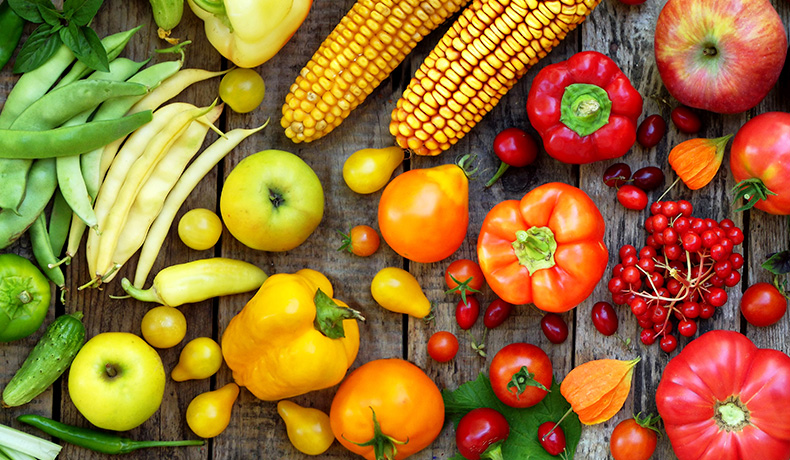
Two Nutrients You Probably Don’t Get Enough Of…
If you’ve previously read our short article on Macronutrients (Link to article) this would be a great place to follow up!
After covering protein, carbohydrates, and fat, we find it absolutely necessary to bring up another very important, life-essential macronutrient. Can you guess what it is? It shouldn’t be too difficult, after all, without it – we would not be able to last more than 3 days.
You’ve got it.
Water. H2O. The sweet nectar of life.
For something so essential for life, you’d think we all get enough of it, right?
Wrong.
Around 40% of Americans do not drink enough water. Soft drinks, coffee, sugary juices, and alcoholic beverages can often mask a thirst almost half of us constantly have.
The recommended amount of water one should drink per day differs from person to person, but don’t wait until you’re thirsty before you start swigging. Thirst is the first sign of dehydration. However, some other signs of dehydration include dark-colored urine, decreased urination frequency (fewer than 4 times per day), headaches, general fatigue, dry skin, and poor concentration.
The best way to manage correct hydration is to keep your body constantly ‘topped up’ with water. Keep a water bottle by your side throughout the entire day and aim for a minimum daily intake of 2 liters (68 oz).
You’ll know you’re on the right track when your pee is as clear as a tranquil paradise waterfall.
Let it flow.
If you’re not a huge fan of water, add a squeeze of lemon juice and a teaspoon of honey to your water bottle; cramming in some extra vitamins and antioxidants while staying hydrated at the same time is a double bonus.
An extra tip for you:
The feeling of being bloated can wreck an entire day. It can kill your appetite, bring down your mood, and even affect your sleep.
Drinking more water may seem as if it would only make matters worse, however, countless studies have shown that by maintaining steady hydration throughout the day, you can largely reduce bloating as well as force the body to naturally flush out both waste products and harmful toxins.
Another area we’d like to cover in this article is something you’ve probably grown up hearing plenty about. Especially if you’ve ever had any form of issue with regularity; someone somewhere would have brought up this very important, yet often neglected carbohydrate.
Fiber.
Specifically, dietary fiber.
Dietary fiber is a non-digestible carbohydrate that originates from plant-based foods.
As discussed in our short article on Macronutrients (Link to article), the majority of carbohydrates are broken down into sugar molecules that enter your bloodstream. However, dietary fiber is not broken down, it actually passes through the body undigested.
But, what’s the point of dietary fiber if it passes through the body undigested?
Well, this is where we have to briefly explain homeostasis.
Homeostasis is the state of metabolic equilibrium within the body, which includes the optimal function of fluid balance and body temperature as well as protection against other metabolic diseases.
Fiber helps regulate the body’s use of sugars, helping to keep hunger levels in check while feeding the body good bacteria, which is essential for optimal health and longevity.
Studies have shown that those with a higher intake of dietary fiber have an exceptionally lower risk of developing heart disease, strokes, hypertension, obesity, diabetes, as well as various gastrointestinal disorders.
The big problem is… we don’t get enough of it.
According to numerous recent studies, 95% of Americans do not consume their recommended daily amount of fiber. Which, of course, helps pave the way to the numerous, unwelcome health issues mentioned above.
But how can we get more fiber?
Well, that’s pretty simple… Go nuts! And not just nuts, but also whole fruits, vegetables, legumes, and whole grains all contain healthy amounts of fiber. Including a good combination of these foods in your diet will not only help increase your daily intake of fiber but will also help you reach recommended daily amounts of other essential vitamins and minerals too.
A great bonus for you to keep in mind is that high-fiber foods are generally more filling, which will consequently aid that weight-loss journey by preventing those common in-between-meal hunger pangs.
How much do we need?
It’s recommended that women consume 25 grams of fiber daily, while men should aim for 38 grams per day.
Finally, keep in mind that there are 2 types of dietary fiber, soluble fiber, and insoluble fiber.
Soluble fiber dissolves in water and can help lower glucose levels and blood cholesterol.
Insoluble fiber does not dissolve in water and can help food move through your digestive system efficiently.
We’re going to include a wonderful list of soluble and insoluble fiber options below. By aiming for a small combination of both types of fiber throughout your day, you’ll secure optimum health and happy regularity.
Soluble Fiber Options
Black beans
Lima beans
Brussels sprouts
Avocados
Sweet potatoes
Broccoli
Turnips
Pears
Kidney beans
Figs
Nectarines
Apricots
Carrots
Apples
Guavas
Flax seeds
Sunflower seeds
Hazelnuts
Oats
Barley
Insoluble Fiber Options
Oat bran
Lentils
Blackberries
Blueberries
Raspberries
Strawberries
Quinoa
Green peas
Spinach
Radishes
Coconut (grated flakes or flour)
Cocoa
Sunflower seeds
Potatoes
Dried apricots
Prunes
Raisins
Dates
Almonds
Walnuts
100% whole grain pasta and bread
Passionfruit
Popcorn
